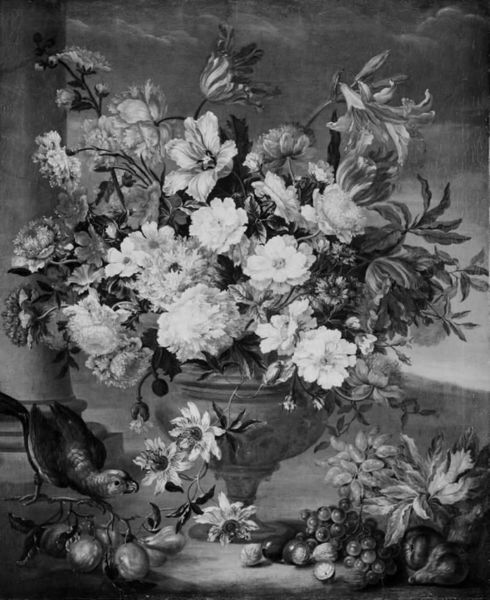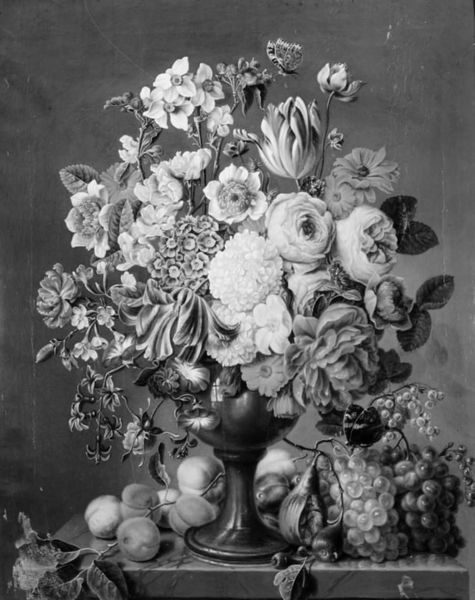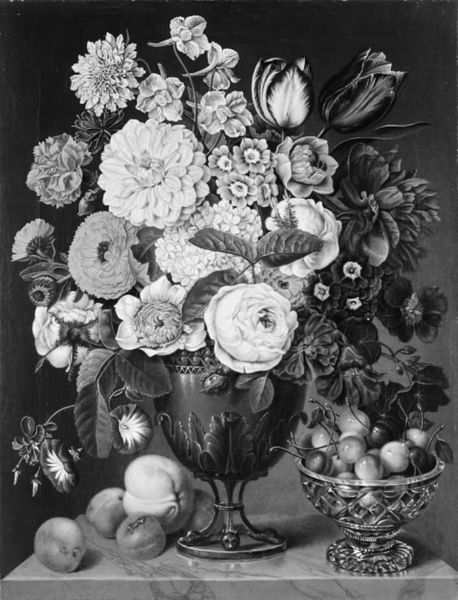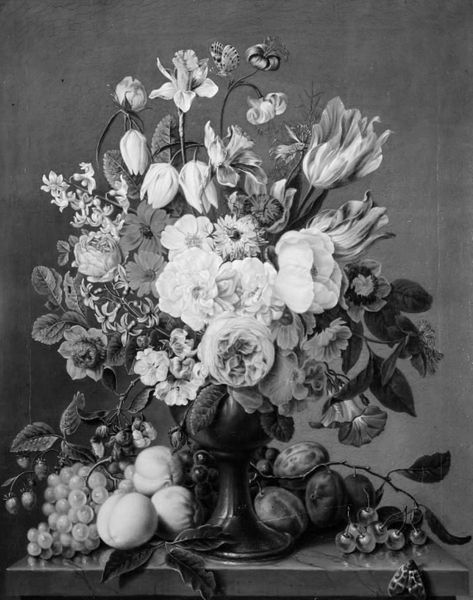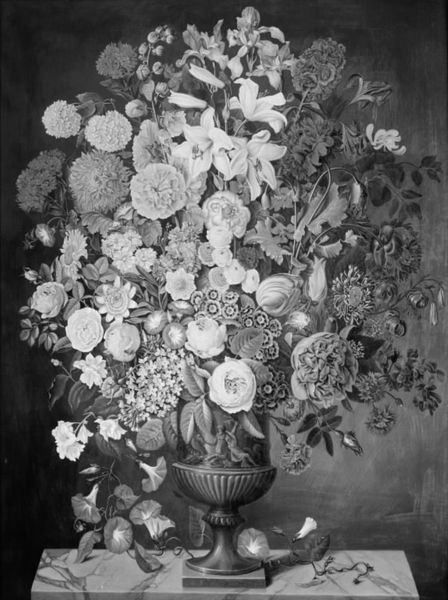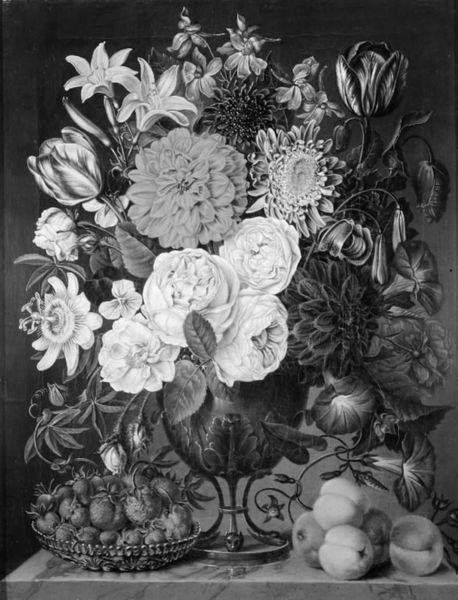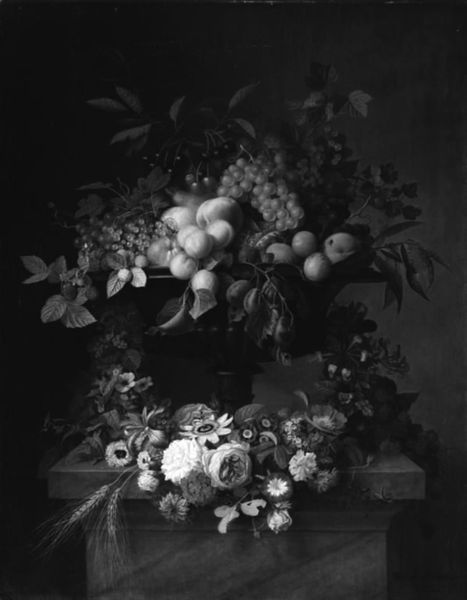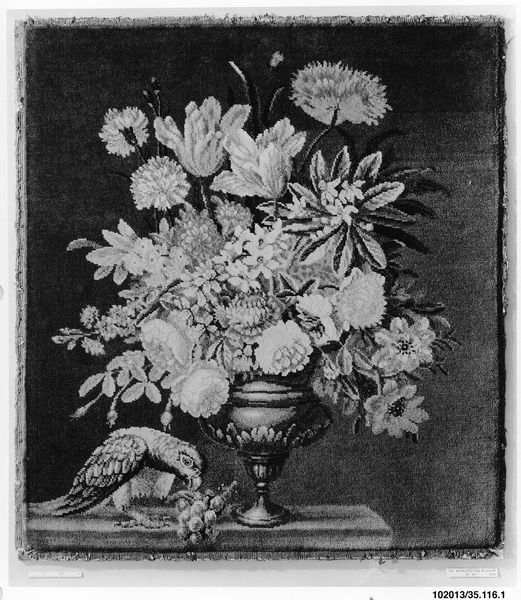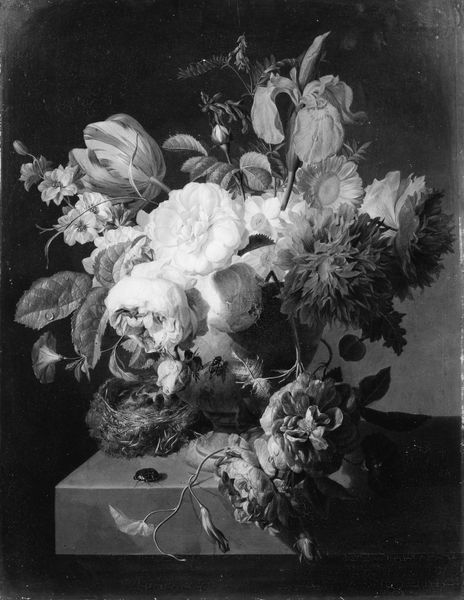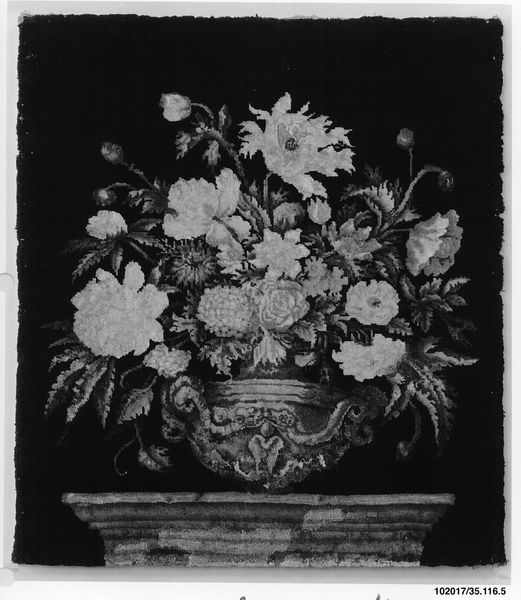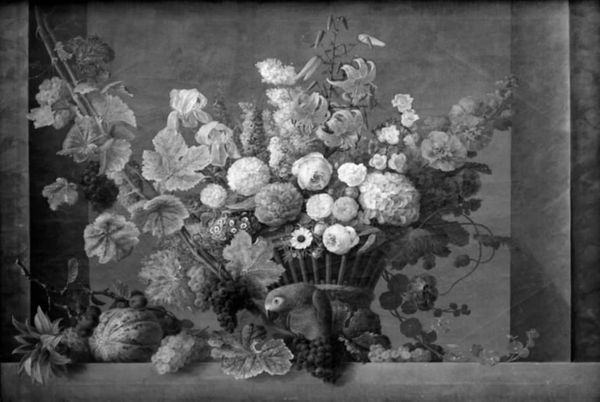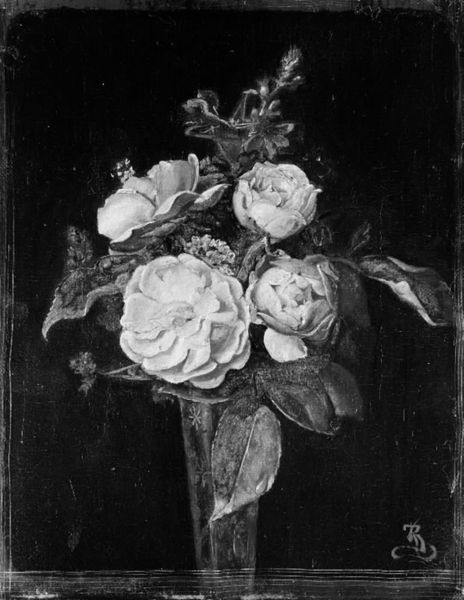
Stor blomsterbuket i en vase. I forgrunden frugter 1738 - 1796
0:00
0:00
Dimensions: 93.5 cm (height) x 77.5 cm (width) (Netto)
Editor: This is *Stor blomsterbuket i en vase. I forgrunden frugter,* a still life created between 1738 and 1796 by E.H. Löffler. It's currently held at the SMK in Copenhagen and rendered in monochrome, though originally oil on canvas, I presume? It strikes me as intensely opulent. What can you tell me about its historical context? Curator: This painting reflects the 18th-century Dutch tradition of floral still life, which extended into other European markets. The selection of flowers wasn't always botanically accurate, so it might represent a constructed image of prosperity and refined taste, where collecting art declared power, knowledge, and access to luxury goods. Consider the burgeoning middle class and their aspirations at that time; what public role did such paintings play? Editor: So it's not necessarily about realism, but more about the image it projects? Was there an element of exclusivity, making it harder for just anyone to collect or create these works? Curator: Absolutely. Think about access to education and artistic training. Who had the leisure and financial means to become an artist or a collector? The art world wasn’t a level playing field. These still lifes visually reinforced social hierarchies, portraying a life of comfort that most viewers could only dream of. The fruit adds another layer - what did the consumption of goods tell an audience during this period? Editor: That's fascinating! It shifts my perspective entirely, considering the societal implications and who was consuming not just the painting, but the ideals it represented. So the painting wasn't just decorative but deeply involved in constructing social identity. Curator: Exactly. It is crucial to consider the public role of art in this era. Now, thinking about contemporary artists, how do you see that influence showing up in art made today? Editor: It’s eye-opening to realize how art like this could shape societal perceptions and aspirations. Thanks, this was extremely insightful. Curator: It’s always beneficial to consider the political undercurrents of art!
Comments
No comments
Be the first to comment and join the conversation on the ultimate creative platform.
